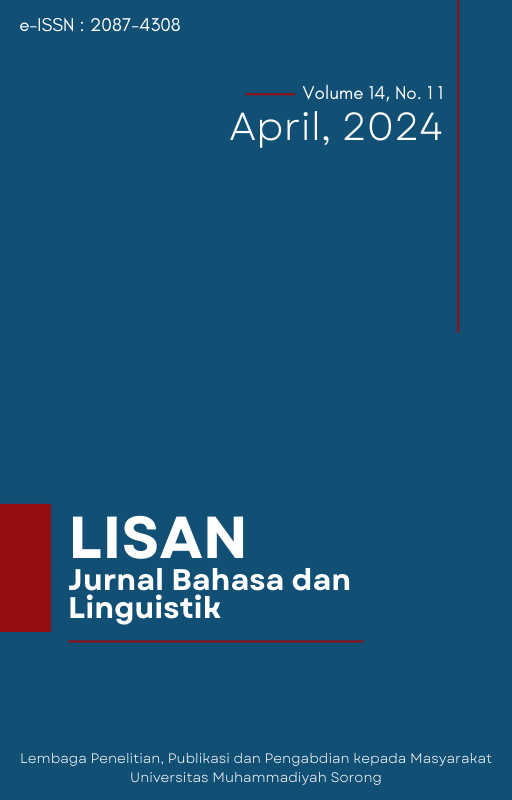The Use of Two Stay Two Stray Method to Improve Students’ Reading Comprehension
DOI:
https://doi.org/10.33506/jbl.v9i1.784Keywords:
Reading Comprehension, Recount Text, Two Stay Two Stray Method.Abstract
The Senior High School are still low in comprehending texts. Therefore, the main objective of this research was to see wheter the use of Two Stay Two Stray method was effective improving the students’ reading comprehension. The researchers used quantitative method. And the design of this research was quasi experimental design used one group pre-test and post-test design. This research assigned two groups namely control and experiment groups. The population of this research was taken at the tenth grade students in academic 2015/2016 of SMA Negeri 3 Sorong,with a total population were 175 students. Each group consisted of 25 students, so the total sample of this research were 50 students. The sample of this research was taken without randomizing. The findings of this research showed that the use of Two Stay Two Stray Method to improved the students’ reading comprehension at the tenth grade of SMAN 3 Sorong, because there was a significant difference between the results of posttest in the experimental group and the control group, where the mean score of posttest in experimental group was 83.6 which was higher than the mean score of control group which was only 72. To compare the two results between experimental and control groups, the researcher used t-test formula and the result of t-test formula was 3.696. By using the degree of significance 5% or 0.05 in the t-table it was obtained 2.021. Thus, alternative hypothesis (H1: 3.696 > 2.021) was accepted because t-test value was higher than t-table value and null hypothesis (Ho: 3.696 < 2.021) was rejected. Therefore, the researcher would like to conclude that the use of Two Stay Two Stray Method could improve students’ reading comprehension at the tenth grade of SMA Negeri 3 Sorong.Â
References
Alshumaimeri, Yousif. 2011. The Effects of Reading Method On the Comprehension Performance of Saudi EFL Students. Saudi Arabia. King Saudi University. International Electronic Journal of Elementary Education, Vol 4, No.1.
Antoni, Nurman. 2010. Exploring EFL Teachers’ strategies in Teaching Reading Comprehension. Jakarta. Indonesia University of Education. Jurnal Penelitian Pendidikan, Vol. 11, No. 2, Oktober.
Arikunto, Suharsimi. 2006. Prosedur Penelitian: Suatu Pendekatan Praktik. Jakarta: Rineka Cipta.
Gillet, Jean Wallace, et al. 2012. Understanding Reading Problems. Boston: Pearson Education
Hanifah, Naning Risti. 2014. The Reading Comprehension Of Report Text Of The Eleventh Grade Students Of Sma Negeri 1 Mayong Jepara In Academic Year 2013/2014 Taught By Using Two Stay Two Stray. Skripsi. Faculty Of Teacher Training And Education University Of Muria Kudus
Kagan,Spencer. 1992. Child Development. Journals of SRCD, Vol. 63, No.1, Februari, 47-58
Purniati. 2014. Improving Students’ Reading Comprehension In Recount Text Through Two Stay Two Stray Technique. Year
/2014. Skripsi
Risti Hanifah, Naning. 2014. The Reading Comprehension Of Report Text Of The Eleventh Grade Students Of Sma Negeri 1 Mayong Jepara In Academic Year 2013/2014 Taught By Using Two Stay Two Stray. Year 2013/2014. Skripsi
Rosyadi, M. Arifian. 2011. Teaching Material Development . Universitas Negeri Semarang.
Sugiyono, 2014. Metode Penelitian Kuantitatif Kualitatif dan R&D. Bandung: Alfabeta
Wibowo, Aris Agung. 2013. The Effectiveness of Using Two Stay Two Stray Technique in Teaching Reading Comprehension of Second Year Students in SMP N 1 Sumbergempol in Academic Year 2012/2013. Skripsi. Departement Of Islamic Education. State College For Islamic Studies (Stain) Of Tulungagung.





